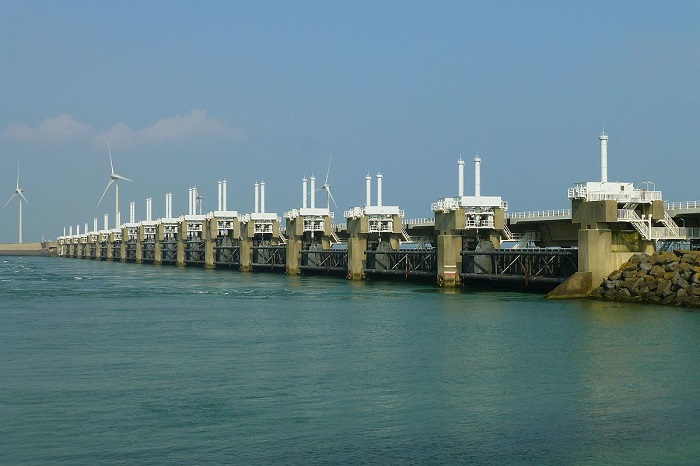ISABEL RUBIO ARROYO | Tungsteno
According to the US National Oceanic and Atmospheric Administration (NOAA), the average global sea level has risen by 21 to 24 centimetres since 1880, which is increasing the risk of flooding in many parts of the world. While some researchers are trying to develop technology to slow the melting of glaciers, other places are preparing to prevent water from destroying them. The Netherlands is betting on the National Delta Programme, dubbed by some media as the world's largest sea defence project.
Unstoppable sea level rise
"As the ocean warms and the ice sheet melts, sea level goes up around the world," Nick Golledge, professor of glaciology at Victoria University of Wellington, told The Conversation. The outlook for the coming years is grim. NOAA says it is likely that sea levels will rise by at least 30 centimetres by 2100 compared to the beginning of the century, "even if greenhouse gas emissions follow a relatively low pathway in coming decades."
The Netherlands is a "low-lying, flood-prone country," says the Dutch government, which is looking for the best way to protect the nation. "After the disastrous floods in 1953, the government took steps to protect the country better against flooding. Agreements were made about the height of the dykes and the management of the coast," it says.
On 1 February 1953, the North Sea Flood killed 1,836 people in the Netherlands and devastated 2,070 square kilometres of land in the south-west of the country. Floods have a greater impact now than in 1953 and the threats are more serious, as the government points out. In addition to rising sea levels, torrential storms are becoming more extreme, temperatures are rising and water shortages are more frequent.
The great flood of 1953 is known as the North Sea Flood. Credit: British Pathé
Giant flood dykes
Dutch engineer Johan van Veen drew up a flood-prevention plan decades ago, which took on added urgency after the 1953 disaster. It involved building dikes to protect the densely populated areas at the mouths of the Rhine, Meuse and Scheldt rivers. "A total of 13 dams, including four barrier and nine secondary dams, were built to close off the mouths and inner reaches of the broad, long, interconnected inlets that for centuries had exposed the region to the destructive power of the North Sea," explains the Britannica encyclopaedia.
The largest dyke is the Oosterscheldekering. It is nine kilometres long and has 65 concrete pillars and a total of 62 steel gates (each 42 metres wide and up to 12 metres high). This system allows the floodgates to close within 75 minutes if it is detected that the sea level could rise more than three metres above the "normal Amsterdam level," which is the same as average sea level.
The American Society of Civil Engineers recognises the Delta Works as one of the Seven Wonders of the Modern World. Credit: XL Creations
The ultimate plan against floods?
Some media are calling it the "largest water defence structure in the world." But will this feat of hydraulic engineering be enough to stem the predicted rise in sea levels due to climate change? It is too early to answer this question with any certainty. Some argue that even the most sophisticated dykes will not be enough, and suggest covering areas with sand dunes to create higher ground to prevent flooding, and investing more in floating farms.
Others point out that even successful policies need to be maintained and adapted to changing times. Recently, the Dutch successfully reformulated their "delta approach" to adapt to "the possible but uncertain impacts of climate change," according to the book Great Policy Successes. Adapting the plan to current challenges is something the Dutch government has been working on for years.
Projects like the Delta Programme are important to mitigate the destructive effects of climate change. Floods are expected to increase in several parts of the world in the coming years. Between 1993 and 2015, the risk of coastal flooding increased by almost 50% globally, according to an article published in Nature Communications. About 26% of the Netherlands is below sea level and nearly 60% is vulnerable to large-scale coastal and river flooding. Other research published in the same journal suggests that by 2050, coastal areas where 300 million people now live could be flooded every year.
Tungsteno is a journalism laboratory to scan the essence of innovation.
